Public/Social Welfare

Social welfare is an important part of any society, providing assistance to those in need and helping to create a more equal and just society. It is a system of government programs and services designed to provide financial aid, health care, housing assistance, and other forms of assistance to individuals and families in need. It is a way for the government to ensure that everyone has access to the basic necessities of life. The main purpose of social welfare programs is to reduce poverty and inequality. These programs are funded by government taxes and are meant to provide a safety net for those who cannot support themselves.
This includes people who are disabled, elderly, or unemployed, as well as low-income families. The money collected from taxes pays for a variety of services such as housing assistance, medical care, and cash assistance. Other programs may include job training, job search assistance, childcare, nutrition assistance, and other forms of aid. Social welfare programs also aim to reduce discrimination and promote social justice. This includes protecting vulnerable populations such as immigrants and minorities from exploitation and discrimination. These programs ensure that everyone has access to the same basic services regardless of race, gender, or social class.
What is Social Welfare Definition

Public/social welfare refers to the collective efforts and initiatives undertaken by governments, organizations, and communities to promote the well-being, development, and social progress of individuals and society as a whole. It involves the provision of support, resources, and services to meet the basic needs of individuals, address social disparities, and enhance the quality of life for all members of society.
Public/social welfare encompasses a range of programs, policies, and initiatives that aim to address social issues, alleviate poverty, promote social justice, and ensure access to essential services such as healthcare, education, housing, and employment. It recognizes the importance of human dignity, equality, and social cohesion in creating a fair and inclusive society.
The concept of public/social welfare emphasizes the responsibility of governments and communities to protect the most vulnerable members of society, reduce social inequalities, and provide opportunities for individuals to lead fulfilling lives. It reflects a commitment to social progress, justice, and the overall well-being of individuals and communities.
History of Public / Social Welfare

In the Roman Empire, the first emperor Augustus provided the Cura Annonae, or grain dole for citizens who could not afford to buy food every month. Social welfare was enlarged by Emperor Trajan. Trajan’s program brought acclaim from many, including Pliny the Younger. The Song dynasty government (960 CE) supported multiple programs which could be classified as social welfare, including the establishment of retirement homes, public clinics, and paupers’ graveyards. According to economist Robert Henry Nelson, “The medieval Roman Catholic Church operated a far-reaching and comprehensive welfare system for the poor”, from the 14th century onward the governments of the Italian city-states began to partner with the church to provide welfare and education to the lower classes. In later Protestant European nations such as the Dutch Republic welfare was managed by local guilds until the abolition of the guild system in the early 19th century. In the free imperial cities of the Holy Roman Empire, the city governments in cities like Nuremberg could take control of the collection and distribution of public welfare ( digitalkatiyarharpal. in).
Social Protection for Public/Social Welfare
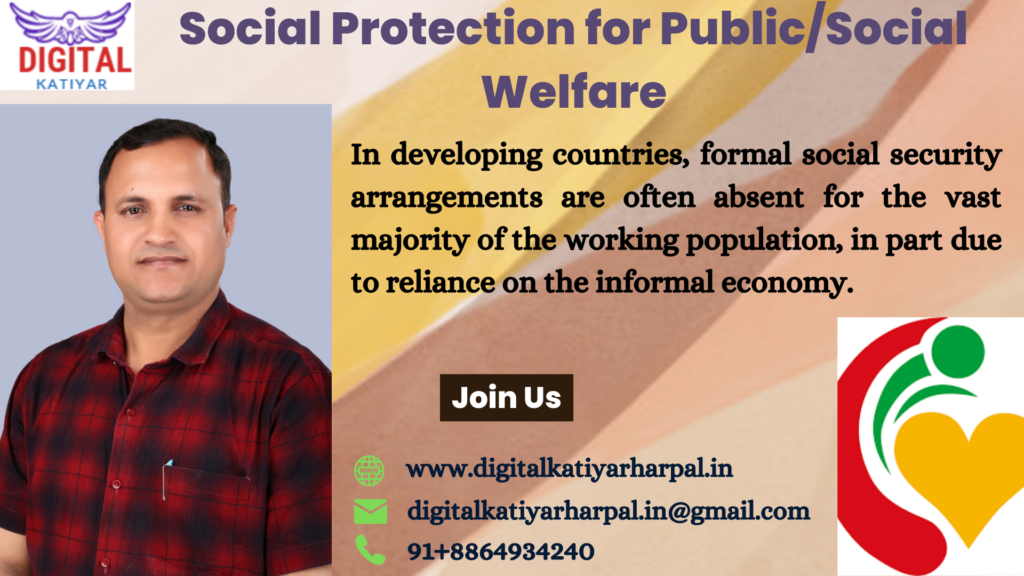
In developing countries, formal social security arrangements are often absent for the vast majority of the working population, in part due to reliance on the informal economy. Additionally, the state’s capacity to reach people may be limited because of its limited infrastructure and resources. In this context, social protection is often referred to instead of social security, encompassing a broader set of means, such as labor market intervention and local community-based programs, to alleviate poverty and provide security against things like unemployment.
India: The Central Government of India’s social programs and welfare expenditures are a substantial portion of the official budget, and state and local governments play roles in developing and implementing social security policies. Additional welfare measure systems are also uniquely operated by various state governments. The government uses the unique identity number (Aadhar) that every Indian possesses to distribute welfare measures in India. As of 2020, the government’s expenditure on social programs and welfare (direct cash transfers, financial inclusion, benefits, health other insurances, subsidies, free school meals, rural employment guarantee), was approximately fourteen lakh crore rupees, which was 7.3% of gross domestic product (GDP). The Central Government of India’s social programs and welfare expenditures are a substantial portion of the official budget, and state and local governments play roles in developing and implementing social security policies. Additional welfare measure systems are also uniquely operated by various state governments. The government uses the unique identity number (Aadhar) that every Indian possesses to distribute welfare measures in India. As of 2020, the government’s expenditure on social programs and welfare (direct cash transfers, financial inclusion, benefits, health other insurances, subsidies, free school meals, and rural employment guarantee), was approximately fourteen lakh crore rupees, which was 7.3% of gross domestic product (GDP).
Why is Public Welfare Important

Public/social welfare is important for several reasons:
Human Dignity: Public/social welfare programs uphold the inherent dignity of every individual by ensuring access to basic needs, such as food, shelter, healthcare, and education. They recognize that all members of society deserve to live with dignity and have the opportunity to fulfill their potential.
Poverty Alleviation: Social welfare programs play a crucial role in reducing poverty and addressing social inequalities. They provide financial assistance, support services, and opportunities for upward mobility, helping individuals and families escape the cycle of poverty and improve their living conditions.
Social Justice and Equality: Public/social welfare programs contribute to social justice by promoting equality of opportunity and reducing disparities among different segments of society. They strive to create a more equitable society by ensuring that everyone has access to essential services, regardless of their socio-economic background.
Social Stability and Cohesion: By addressing social issues and supporting vulnerable populations, social welfare programs help create more stable and cohesive communities. They reduce social tensions, promote social inclusion, and foster a sense of solidarity and belonging within society.
Health and Well-being: Social welfare initiatives in healthcare, mental health, and disability services improve the overall health and well-being of individuals and communities. They ensure access to medical care, preventive services, and support systems that contribute to better physical and mental health outcomes.
Education and Skill Development: Public/social welfare programs that focus on education and skill development empower individuals to acquire the knowledge and skills needed to participate in the workforce and contribute to economic growth. They enhance educational opportunities, promote lifelong learning, and facilitate economic mobility.
Social Safety Net: Social welfare programs provide a safety net for individuals and families during times of crisis, such as unemployment, illness, or natural disasters. They offer a measure of security and support, preventing individuals from falling into deeper hardships and helping them navigate difficult circumstances.
Economic Impact: Public/social welfare programs can have positive economic impacts. By addressing social needs and providing assistance to vulnerable populations, these programs can stimulate economic growth, reduce healthcare costs, decrease social inequalities, and enhance productivity and social mobility.
Overall, public/social welfare is essential for building a fair, compassionate, and inclusive society. It addresses social issues, supports those in need, and promotes the overall well-being and development of individuals and communities.
Who Provides for Public / Social Welfare
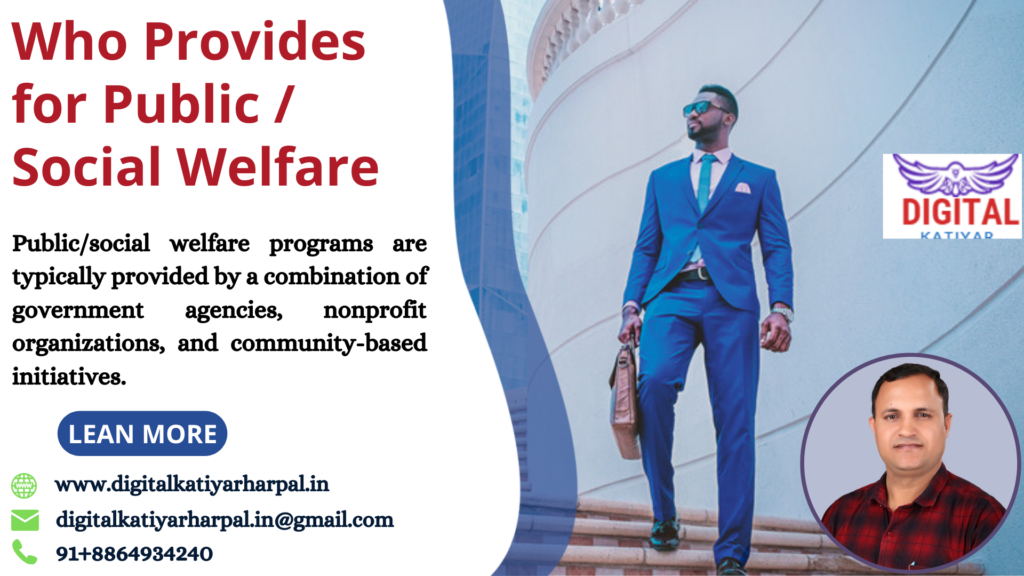
Public/social welfare programs are typically provided by a combination of government agencies, nonprofit organizations, and community-based initiatives. Here are the key entities involved in providing public/social welfare:
Government Agencies: Governments at various levels, such as national, state, and local governments, play a significant role in providing public/social welfare programs. They allocate funds, develop policies, and administer programs to address social needs. Government agencies responsible for social welfare include departments of social services, health, education, labor, and housing.
Nonprofit Organizations: Nonprofit organizations, also known as non-governmental organizations (NGOs) or charitable organizations, contribute to public/social welfare through service delivery, advocacy, and community development. These organizations often specialize in specific areas such as poverty alleviation, healthcare, education, housing, or social support. They may receive funding from governments, private donations, or grants.
Community-Based Initiatives: Local community groups, grassroots organizations, and volunteer-based initiatives also contribute to public/social welfare. These initiatives can include neighborhood associations, self-help groups, faith-based organizations, and community centers that provide assistance, support, and resources to individuals and communities in need.
International Organizations: International organizations, such as the United Nations, World Bank, and regional development banks, also play a role in promoting public/social welfare globally. They provide financial support, technical expertise, and guidance to governments and organizations working towards social development and welfare.
Philanthropic Foundations: Philanthropic foundations, established by individuals, families, or corporations, often support public/social welfare programs through grants, donations, and strategic investments. These foundations focus on addressing specific social issues, supporting research and innovation, and partnering with governments and nonprofits to achieve social impact.
It’s important to note that the specific roles and contributions of these entities may vary across countries and regions. Collaboration and coordination among governments, nonprofit organizations, community initiatives, and international entities are crucial for the effective provision of public/social welfare programs and services.
Programs & Schemes of Public / Social Welfare
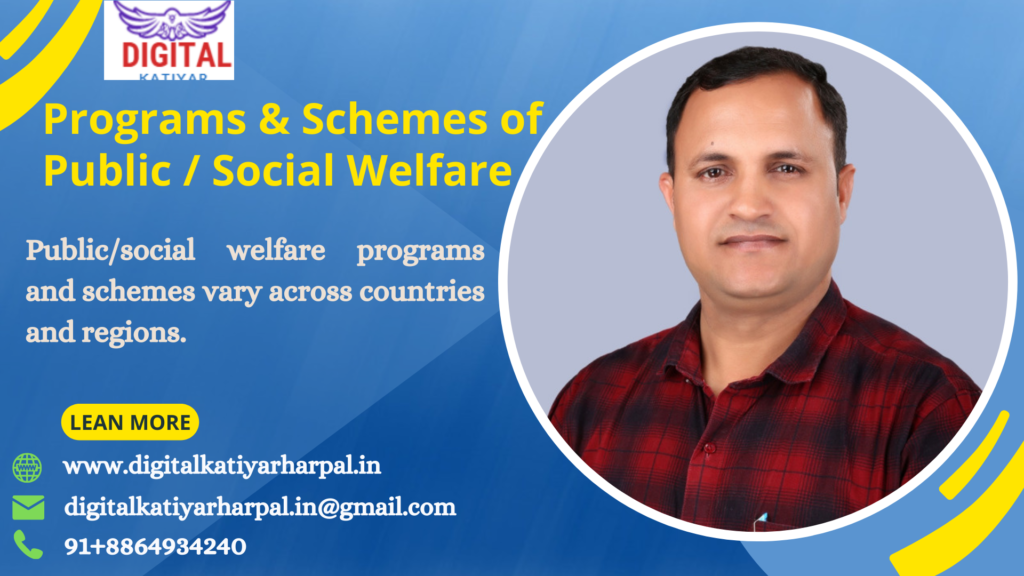
Public/social welfare programs and schemes vary across countries and regions. Here are some examples of common programs and schemes implemented in many countries:
Cash Transfer Programs: These programs provide direct financial assistance to individuals or families in need. Examples include social security, welfare payments, conditional cash transfer programs, and universal basic income initiatives.
Healthcare Programs: Healthcare programs aim to ensure access to affordable and quality healthcare services. Examples include public health insurance schemes, Medicaid (in the United States), National Health Service (NHS) (in the United Kingdom), and health coverage for specific vulnerable populations such as children or seniors.
Education Initiatives: Education programs and schemes focus on improving access to education and enhancing educational outcomes. Examples include scholarships, grants, tuition fee waivers, school meal programs, and initiatives to improve education quality in disadvantaged areas.
Housing Programs: Housing programs provide assistance and support to individuals and families in securing adequate and affordable housing. Examples include public housing, rental assistance, housing vouchers, and schemes to promote homeownership.
Food Assistance Programs: Food assistance programs ensure access to nutritious food for individuals and families experiencing food insecurity. Examples include food stamps (such as the Supplemental Nutrition Assistance Program – SNAP), food banks, school meal programs, and Women, Infants, and Children (WIC) programs.
Employment and Job Training Initiatives: Employment programs aim to promote employment opportunities and support individuals in finding and maintaining jobs. They may include job placement services, vocational training programs, apprenticeships, and initiatives to support entrepreneurship and self-employment.
Social Services and Support: Social service programs provide various forms of support to vulnerable populations. Examples include child protection services, elder care, disability services, foster care, counseling services, and support for victims of domestic violence or abuse.
Legal Aid and Justice Initiatives: Legal aid programs ensure access to legal representation and support for individuals who cannot afford it. They promote access to justice, protect rights, and address legal disparities.
These are just a few examples, and the specific programs and schemes can vary greatly depending on the country, region, and the specific social needs being addressed. It’s important to refer to official government sources or the websites of relevant social welfare agencies in your country to access comprehensive and up-to-date information on the specific programs and schemes available.
Type of Public/Social welfare
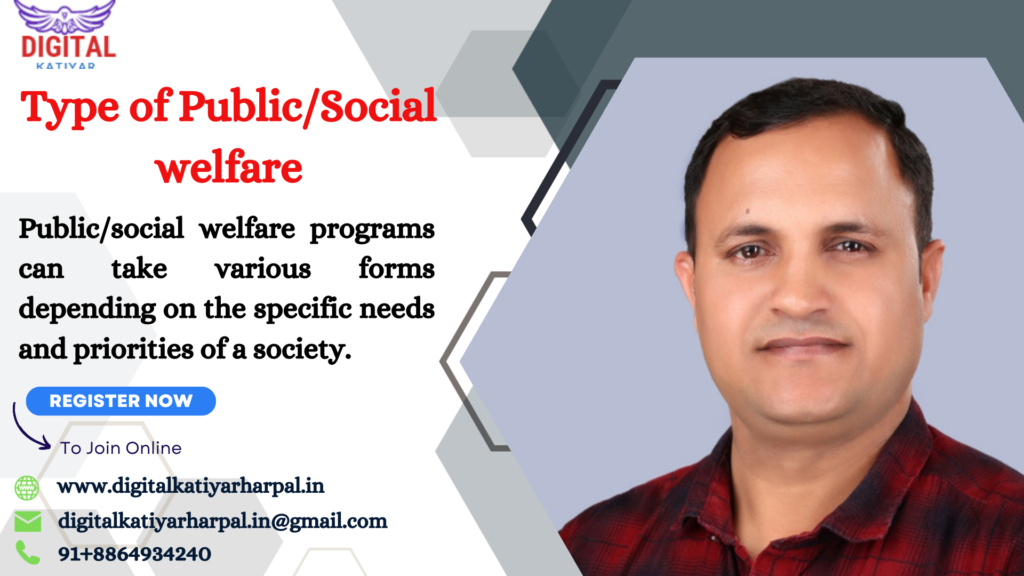
Public/social welfare programs can take various forms depending on the specific needs and priorities of a society. Here are some common types of public/social welfare initiatives:
Income Support Programs: These programs aim to provide financial assistance to individuals and families who are experiencing poverty or facing economic hardships. Examples include social security, unemployment benefits, welfare payments, and cash transfer programs.
Healthcare and Medical Assistance: These programs ensure access to affordable healthcare services, medical insurance, and assistance for individuals and families. They can include public health clinics, subsidized healthcare plans, Medicaid, Medicare, and assistance for prescription medications.
Education and Training: These programs focus on providing access to quality education and skill development opportunities. They may include initiatives like public schools, scholarships, grants, vocational training, and adult education programs.
Housing Assistance: These programs help individuals and families secure affordable and adequate housing. They can include public housing, rental assistance, housing vouchers, and initiatives to combat homelessness.
Food Assistance: These programs provide access to nutritious food for individuals and families who are unable to afford it. Examples include food stamps (Supplemental Nutrition Assistance Program – SNAP), food banks, school meal programs, and the Women, Infants, and Children (WIC) program.
Social Services and Support: These programs offer a range of social services and support to vulnerable populations. They may include child protection services, elder care, disability services, foster care, counseling services, and support for victims of domestic violence or abuse.
Employment and Job Training: These programs aim to promote employment opportunities and assist individuals in finding and maintaining jobs. They may include job placement services, job training programs, career counseling, and initiatives to support entrepreneurship.
Legal Aid and Justice: These programs provide legal assistance and support to individuals who cannot afford legal representation. They ensure access to justice, protect rights, and promote equality before the law. It’s important to note that the availability and scope of these programs can vary from country to country, reflecting the social, economic, and political contexts of each nation.
Benefits of Public/Social Welfare
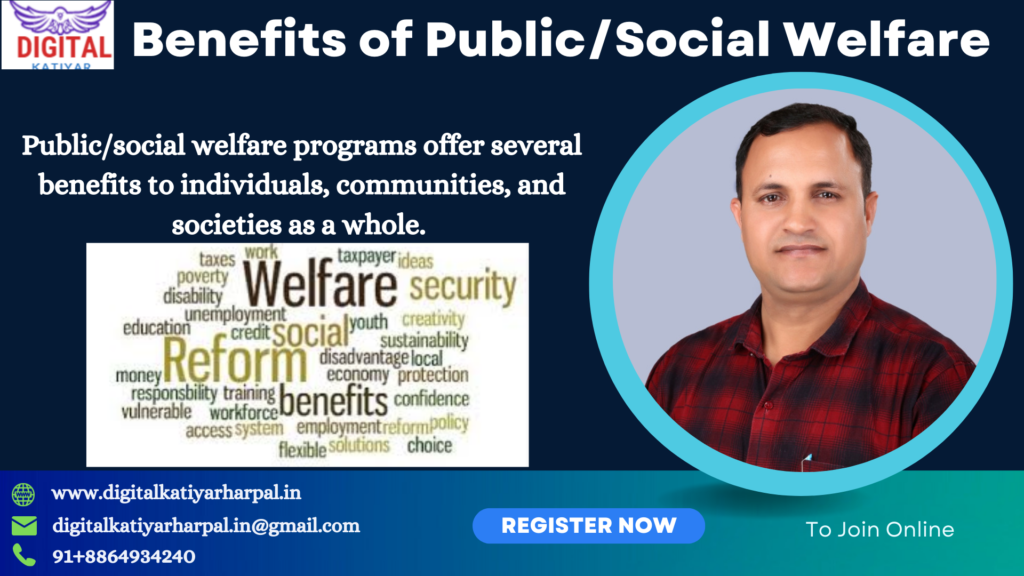
Public/social welfare programs offer several benefits to individuals, communities, and societies as a whole. Here are some key benefits of public/social welfare initiatives:
Poverty Reduction: Social welfare programs play a vital role in reducing poverty by providing financial support, access to basic needs, and opportunities for upward mobility. They help individuals and families meet their essential requirements and break the cycle of poverty.
Enhanced Social Equality: These programs promote social equality by ensuring that everyone has access to essential services and resources regardless of their socioeconomic background. They aim to reduce disparities and create a more inclusive society.
Improved Health and Well-being: Public/social welfare initiatives contribute to better health outcomes by providing access to healthcare services, medical assistance, and health insurance. They also support preventive measures, health education, and disease control, leading to improved overall well-being.
Education and Skill Development: Welfare programs focusing on education and training offer opportunities for individuals to acquire knowledge and skills, leading to increased employability, better job prospects, and higher income potential. They contribute to personal growth and development.
Social Cohesion and Stability: By addressing social issues and providing support to vulnerable populations, social welfare programs contribute to social cohesion and stability within communities. They promote a sense of belonging, reduce social tensions, and foster a more harmonious society.
Economic Stimulus: Social welfare programs can act as economic stimuli by injecting funds into the economy through cash transfers and other financial support. This spending can boost local businesses, create jobs, and contribute to economic growth.
Improved Quality of Life: Welfare programs help individuals and families meet their basic needs, access essential services, and overcome various challenges. This leads to an overall improvement in the quality of life, allowing people to live with dignity and pursue their aspirations.
Social Safety Net: Social welfare programs provide a safety net for individuals and families during times of crisis, such as unemployment, illness, or natural disasters. They offer a measure of security and stability in challenging circumstances.
Overall, public/social welfare programs aim to create a more equitable and just society by addressing social disparities, promoting well-being, and ensuring that everyone has access to basic necessities and opportunities for a better life.
Best place or website for public/Social Welfare
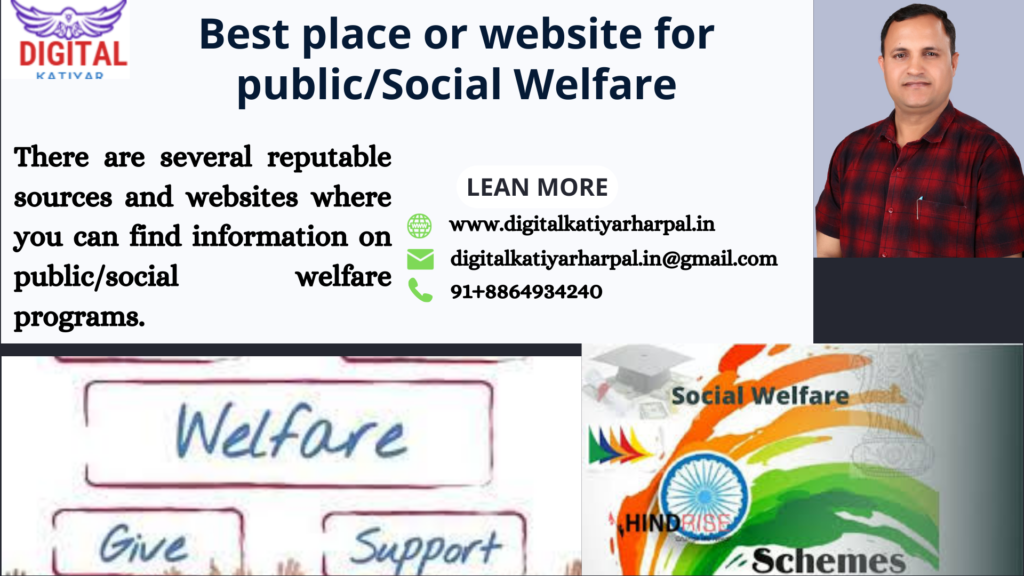
There are several reputable sources and websites where you can find information on public/social welfare programs. Here are a few examples:
Government Websites: The official websites of government agencies responsible for social welfare in your country or region are often the best sources of information. These websites provide details about available programs, eligibility criteria, application processes, and contact information. Examples include the U.S. Department of Health and Human Services (HHS) website (www.hhs.gov) or the Department of Social Services websites in various countries.
Social Service Agencies: Social service agencies and organizations that specialize in providing assistance and support to vulnerable populations often have comprehensive information on available programs and services. Examples include the United Way (www.unitedway.org) in the United States or local community-based organizations in your area.
Non-profit Organizations: Many nonprofit organizations focus on advocacy and providing resources in the field of social welfare. They often have informative websites with resources, research, and information on specific social issues. Examples include the National Association of Social Workers (www.socialworkers.org) and the Center on Budget and Policy Priorities (www.cbpp.org).
International Organizations: International organizations like the United Nations (www.un.org) and the World Bank (www.worldbank.org) also provide valuable information on social welfare programs, policies, and initiatives. They offer global perspectives and insights into best practices in social development.
Local Government Websites: Local government websites, such as city or municipal websites often provide information on local social welfare programs and services available in your specific area. These websites may have dedicated sections for social services or human services.
It’s important to note that the availability and relevance of these sources may vary depending on your country or region. It’s advisable to consult official government sources and trusted organizations specific to your location to obtain accurate and up-to-date information on public/social welfare programs.
Local Government Websites for Public/Social Welfare in India.
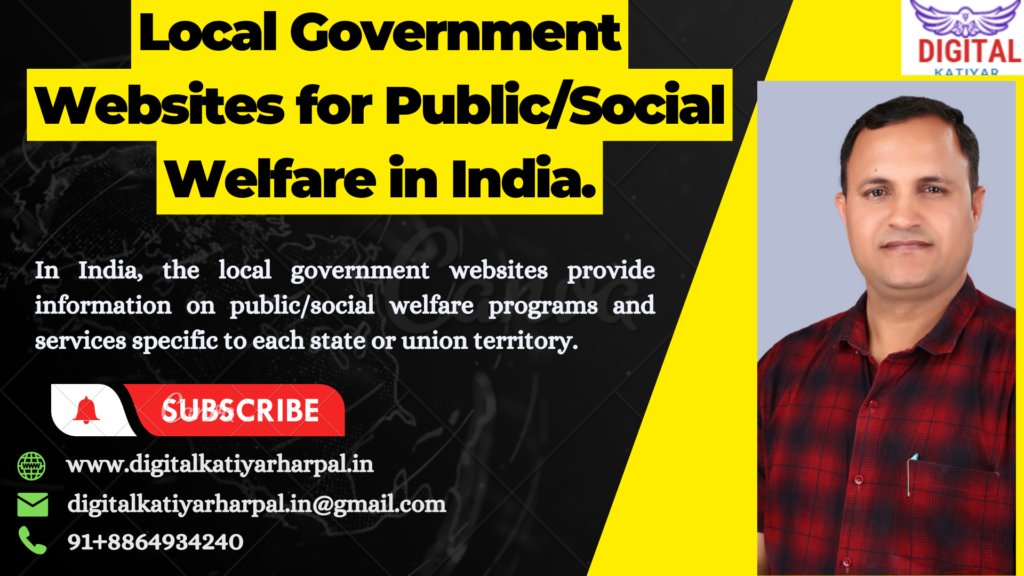
In India, the local government websites provide information on public/social welfare programs and services specific to each state or union territory. Here are a few examples of local government websites in India where you can find information on social welfare:
National Informatics Centre (NIC): The NIC (www.nic.in) is a government organization that provides e-governance services to various government departments. They often host official websites for state and union territory governments, where you can find information on social welfare programs and services. Visit the NIC website and search for the specific state or union territory you are interested in to access their official website.
Ministry of Social Justice and Empowerment: The Ministry of Social Justice and Empowerment (www.socialjustice.nic.in) is responsible for formulating and implementing social welfare programs in India. Their website provides information on various schemes, policies, and initiatives related to social justice and empowerment. They also have links to state-specific social welfare departments that offer services and programs.
State Government Websites: Each state and union territory in India has its own official website, which typically includes a section dedicated to social welfare. These websites provide information on state-specific social welfare programs, application processes, eligibility criteria, and contact details. To find the official website of a specific state or union territory, you can search for the name of the state/union territory followed by “official website.” For example, “Government of Maharashtra official website” or “Government of Delhi official website.”
District Websites: Some districts within states may have their own official websites that provide information on local social welfare programs and services. These websites can be particularly helpful for accessing specific district-level schemes and initiatives. You can search for the district name followed by “official website” to find the relevant website.
When accessing these websites, navigate to the sections related to social welfare, social services, or departments responsible for social welfare programs to find detailed information. It’s advisable to refer to official government sources for accurate and up-to-date information on social welfare in India.
Public/Social Welfare Day
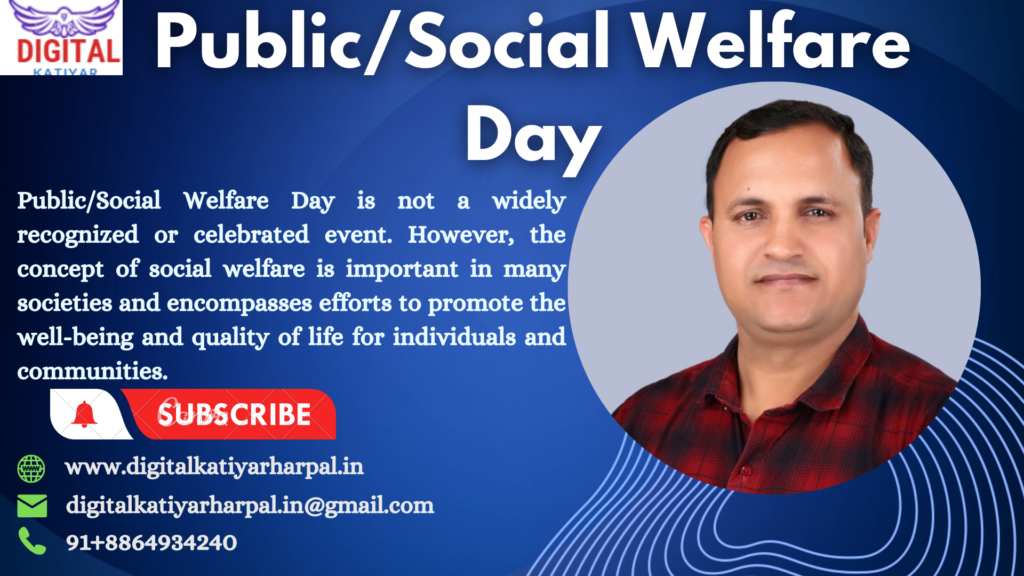
Public/Social Welfare Day is not a widely recognized or celebrated event. However, the concept of social welfare is important in many societies and encompasses efforts to promote the well-being and quality of life for individuals and communities. Various countries may have specific days or events dedicated to raising awareness about social welfare issues or honoring those who work in the field. These events may focus on topics such as poverty alleviation, healthcare accessibility, education, employment, and social justice.
While there isn’t a specific global or universally recognized day dedicated to public/social welfare, there are several established international observances that relate to specific aspects of social welfare. Some examples include:
International Day for the Eradication of Poverty (October 17): This day aims to raise awareness and promote action towards ending poverty in all its forms worldwide.
World Health Day (April 7): Organized by the World Health Organization (WHO), this day highlights global health issues and mobilizes efforts to address them.
International Day of Education (January 24): This day emphasizes the importance of education for sustainable development and promotes access to quality education for all.
International Day for the Elimination of Racial Discrimination (March 21): This day promotes equality, justice, and human rights by raising awareness about the dangers of racial discrimination.
International Day of Persons with Disabilities (December 3): This day promotes the rights and well-being of people with disabilities and raises awareness about their challenges and achievements. These observances and other similar events provide opportunities for individuals, organizations, and governments to focus on social welfare issues and take action to improve the lives of people in need.
Security of Public/Social Welfare
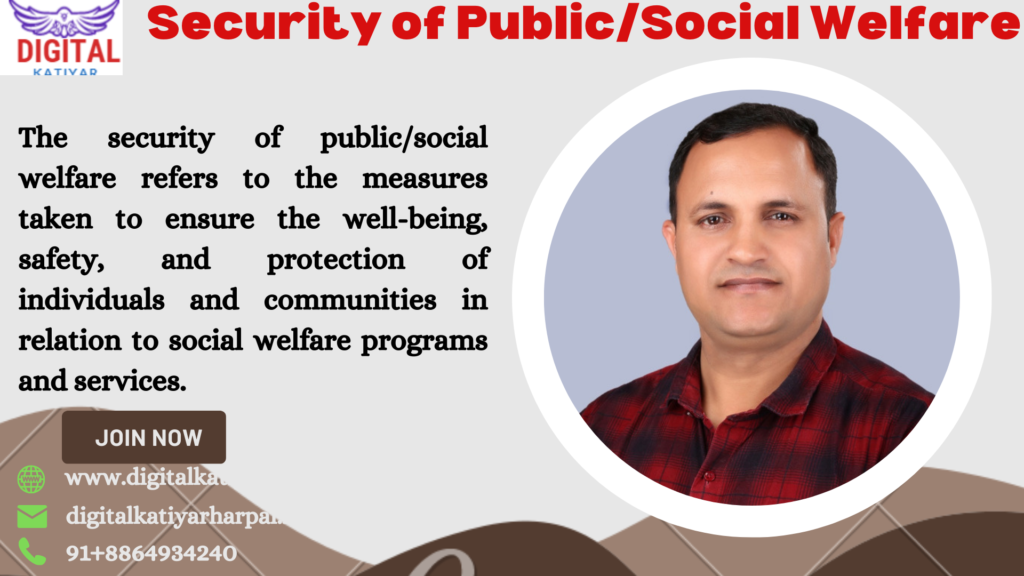
The security of public/social welfare refers to the measures taken to ensure the well-being, safety, and protection of individuals and communities in relation to social welfare programs and services. It involves creating a safe and secure environment that allows people to access and benefit from these programs without fear of harm or undue risk. Here are some aspects of security in the context of public/social welfare:
Personal Safety: Ensuring the safety of individuals who access social welfare services is paramount. This includes implementing measures to protect individuals from physical harm, abuse, or discrimination while receiving assistance or participating in related activities.
Data Privacy and Confidentiality: Maintaining the privacy and confidentiality of personal information is crucial in social welfare programs. Safeguarding sensitive data, such as financial records or personal details, helps prevent identity theft, fraud, or unauthorized access to confidential information.
Cyber Security: With the increasing use of digital platforms and technologies in delivering social welfare services, cyber security becomes essential. Protecting online systems, databases, and communication channels from cyber threats helps maintain the integrity and security of public/social welfare programs.
Social Stability: Social welfare programs often aim to address inequalities and promote social cohesion. Ensuring social stability involves creating an environment where people feel secure, and valued, and have equal opportunities to access services and participate in society without fear of discrimination or violence.
Emergency Preparedness: Public/social welfare services should have contingency plans and response mechanisms in place to address emergencies, disasters, or crises. This includes ensuring the continuity of essential services, providing emergency relief, and supporting vulnerable populations during challenging times.
Fraud Prevention: Implementing measures to prevent fraud and misuse of social welfare resources is crucial for maintaining the integrity of these programs. Robust monitoring, auditing systems, and appropriate oversight mechanisms help identify and deter fraudulent activities.
Legal Protections: Establishing and enforcing legal frameworks that protect the rights and well-being of individuals accessing social welfare services is vital. This includes anti-discrimination laws, regulations against abuse or exploitation, and mechanisms for reporting grievances or seeking redress.
Overall, ensuring the security of public/social welfare involves a holistic approach that encompasses physical safety, data protection, cyber security, social stability, emergency preparedness, fraud prevention, and legal protections. By addressing these aspects, governments, organizations, and communities can strive to create a secure and supportive environment for individuals to access and benefit from social welfare programs.
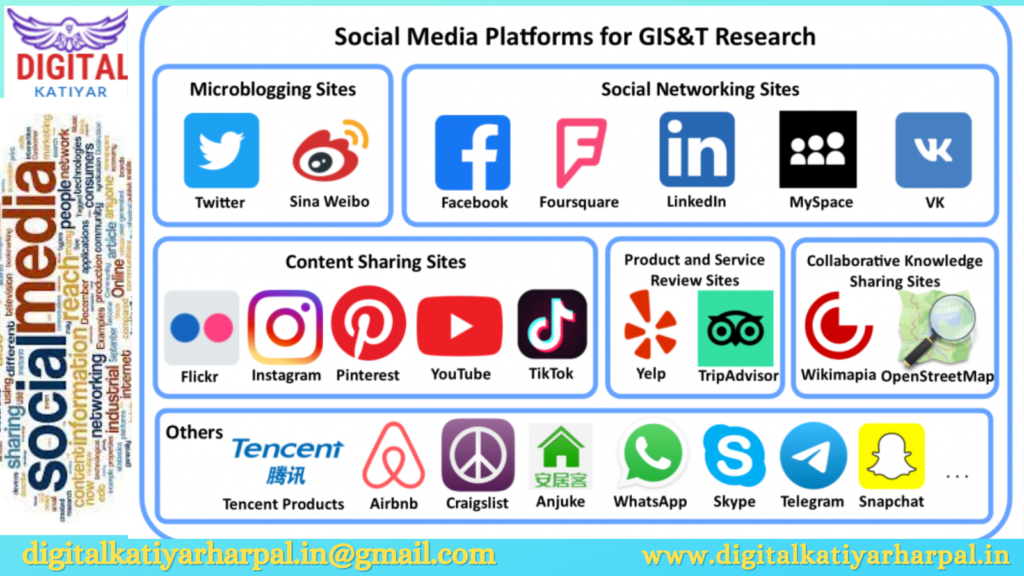
(http://samajkalyan.up.gov.in/)
| SN | Schemes Name | Website |
| 1 | Under the Old Age/Farmer Pension scheme | http://sspy-up.gov.in/) |
| 2 | National Family Benefit Scheme | http:/nfbs.upsdc.gov.in |
| 3 | All Kinds of scholarship Pre-Matric Scholarship scheme | http://scholarship.up.gov.in |
| 4 | Operation of Government School-Based of Ashram Pattern: प्रदेश में अनुसूचित जाति एवं अनुसूचित जनजाति/विमुक्त जाति के ग्रामीण एवं शहरी क्षेत्र के निर्धन एवं प्रतिभावान छात्रों को उत्कृष्ठ आवासीय शिक्षा निःशुल्क प्रदान करने के उद्देश्य से समाज कल्याण विभाग द्वारा प्रदेश में 94 राजकीय आश्रम पद्धति विद्यालयों का संचालन किया जा रहा है। शिक्षा के साथ-साथ निःशुल्क छात्रावास, पाठ्य पुस्तकें,यूनीफार्म एवं खेल कूद आदि की व्यवस्था राज्य सरकार करती है। इन विद्यालयों में 60 प्रतिशत अनुसूचित जाति/जनजाति, 25 प्रतिशत अन्य पिछड़ा वर्गतथा 15 प्रतिशत सामान्य वर्ग के छात्रों को प्रवेश दिये जाने की व्यवस्था है। | |
| 5 | Uttar Pradesh Parents and Senior Citizen feeding and Operation of Old Age Homes: उत्तर प्रदेश माता-पिता और वरिष्ठ नागरिकों का भरण-पोषण तथा कल्याण नियमावली, 2014 प्रख्यापित कर, नियमावली में दिये गये प्राविधानों के अनुसार प्रदेश के समस्त 75 जनपदों में वृद्धाश्रमों का संचालन किया जा रहा है। प्रदेश के प्रत्येक जनपद में संचालित वृद्धाश्रम की क्षमता 150 वृद्ध संवासियों की है। स्वैच्छिक संस्थाओं के माध्यम से पी0पी0पी0 माडल पर संचालित वृद्धाश्रम में प्रति वृद्ध संवासी हेतु निःशुल्क आवास, भोजन, वस्त्र, औषधि, मनोरंजन, पर्सनल केयर की सामग्री की पूर्ण सुविधा प्रदान की जा रही है। इन वृद्धाश्रमों में वृद्धजनों हेतु शुद्ध पेय जल (आर0ओ0) की व्यवस्था है। ऐसे वृद्धजन, जो रेलवे स्टेशनो, बस स्टेशनो आदि से जिलाधिकारी, उप जिलाधिकारी, पुलिस अथवा जिला समाज कल्याण अधिकारी के सम्पर्क में आते हैं, जिनके पास रहने, खाने की व्यवस्था नहीं है तथा माननीय संसद, माननीय विधायकगण अथवा अन्य किसी गणमान्य जनप्रतिनिधि द्वारा जरूरतमंद वृद्ध के प्रवेश के सम्बन्ध में संस्तुति की जाती है, तो ऐसे प्रकरणों में जिलाधिकारी की सहमति से जिला समाज कल्याण अधिकारी द्वारा वृद्धाश्रम मे रखे जाने की अनुमति दी जायेगी। | |
| 6 | Financial assistance in conditions of Torture and Harassment: अनुसूचित जाति एवं अनुसूचित जनजाति वर्ग के व्यक्तियों के विरूद्ध विभिन्न कारणों से अत्याचार व अपराध की घटनाओं की रोकथाम के लिए भारतीय दण्ड संहिता के साथ अनुसूचित जाति एवं अनुसूचित जनजाति अत्याचार निवारण अधिनियम-1989 का प्राविधान किया गया है। उत्पीड़ित व्यक्तियों अथवा परिवारों को निर्धारित समय सीमा के अन्तर्गत आर्थिक मदद प्रदान की जाती है। अनुसूचित जाति/जनजाति अत्याचार निवारण अधिनियम 1989 तथा पी0सी0आर0 एक्ट के अन्तर्गत अत्याचार से प्रभावित अनुसूचित जाति के व्यक्तियों या परिवारों को आर्थिक सहायता भारत सरकार की नियमावली के अन्तर्गत न्यूनतम रू0 85,000/-(रूपये पचासी हजार) से लेकर अधिकतम रू0 8,25,000/-(आठ लाख पच्चीस हजार) तक की सहायता विभिन्न प्रकार की घटना की प्रकृति/धारा के आधार पर उपलब्ध करायी जाती है। | |
| 7 | Operation of Pre-examination Training Centres: 1. अनुसूचित जाति/अनुसूचित जनजाति के अभ्यर्थियों को राज्य सेवाओं की परीक्षा में प्रशिक्षण योजना :- अनुसूचित जाति/अनुसूचित जनजाति एवं पिछड़ी जाति के ऐसे अभ्यर्थी जो स्नातक परीक्षा उत्तीर्ण हो एवं जिनके माता-पिता/अभिभावक की वार्षिक आय सीमा रू0 6.00 लाख से कम हो, को योजनान्तर्गत आच्छादित किया जाता है। समाज कल्याण विभाग द्वारा वर्तमान में सात पूर्व परीक्षा प्रशिक्षण केन्द्र संचालित किये जा रहे है, जिनका विवरण निम्नवत् है:- 2. श्री छत्रपति शाहू जी महाराज शोध एवं प्रशिक्षण संस्थान, भागीदारी भवन, गोमतीनगर, लखनऊ:- यह केन्द्र वर्ष 1997 से संचालित है। इसकी क्षमता 300 प्रशिक्षार्थियों की है, जिसमें 50 प्रतिशत पिछड़ी जाति, 45 प्रतिशत अनुसूचित जाति एवं 5 प्रतिशत जनजाति के अभ्यर्थी होते है। 3. आदर्श पूर्व परीक्षा केन्द्र (बालिका), अलीगंज, लखनऊ:- यह केन्द्र वर्ष 1994 से स्थापित है। इसकी क्षमता 150 प्रशिक्षार्थियों की है, जिसमें 50 प्रतिशत पिछड़ी जाति, 45 प्रतिशत अनुसूचित जाति एवं 5 प्रतिशत जनजाति के अभ्यर्थी होते है। 4. न्यायिक सेवा प्रशिक्षण केन्द्र, इलाहाबाद:- यह केन्द्र वर्ष 1979 से स्थापित है। इस केन्द्र की क्षमता 50 अभ्यर्थियों की है, जो केवल अनुसूचित जाति के छात्रों हेतु संचालित है। 5. संत रविदास आई0ए0एस0, पी0सी0एस0 पूर्व परीक्षा प्रशिक्षण केन्द्र, वाराणसी:- इस केन्द्र का संचालन अगस्त 2008 से प्रारम्भ हुआ है। इसकी क्षमता 100 अभ्यर्थियों की है तथा यह केन्द्र अनुसूचित जाति, अनुसूचित जनजाति के अभ्यर्थियों के लिए संचालित है। 6. डा0 बी0आर0 अम्बेडकर आई0ए0एस0, पी0सी0एस0 पूर्व परीक्षा प्रशिक्षण केन्द्र, अलीगढ़:- अनुसूचित जाति के प्रशिक्षार्थियों हेतु केन्द्र का संचालन 15 दिसम्बर, 2009 से प्रारम्भ किया गया हैं, इस केन्द्र की क्षमता 200 अभ्यर्थियों की है। 7. डा0 बी0आर0 अम्बेडकर आई0ए0एस0, पी0सी0एस0 पूर्व परीक्षा प्रशिक्षण केन्द्र, आगरा:- अनुसूचित जाति के अभ्यर्थियों हेतु संचालित इस केन्द्र का संचालन 25 जनवरी, 2010 से प्रारम्भ हुआ है। इसकी क्षमता 200 अभ्यर्थियों की है। 8. आई0ए0एस0, पी0सी0एस0 कोचिंग केन्द्र, निजामपुर, हापुड़:- इस केन्द्र का संचालन वर्ष 2010-11 से प्रारम्भ किया गया है। यह केन्द्र अनुसूचित जाति के प्रशिक्षार्थियों के लिए है। केन्द्र में 200 अभ्यर्थियों के प्रशिक्षण की व्यवस्था है, जिसमें 120 पुरूष तथा 80 महिला अभ्यर्थी है। | |
| 8 | Operation of Hostels: अपने घर से दूर रहकर अध्ययन करने वाले अनुसूचित जाति के छात्र-छात्राओं के आवासीय समस्या के निदान हेतु समाज कल्याण विभाग द्वारा छात्रावासों का निर्माण कराया जाता है। इन छात्रावासों में छात्रों को निःशुल्क आवासी व्यवस्था, फर्नीचर, विद्युत की सुविधा उपलब्ध करायी जाती है। भोजन बनाने के लिए रसोईयाँ, कहार तथा सफाई के लिए स्वच्छकार की व्यवस्था शासकीय व्यय पर की जाती है, परन्तु भोजन आदि पर आने वाला व्यय छात्रों को स्वयं वहन करना होता है। समाज कल्याण विभाग द्वारा कुल 262 छात्रावास निर्मित कराये गये हैं, जिनमें अनुसूचित जाति/अनुसूचित जनजाति के छात्रों को आवासीय सुविधा प्रदान करायी जा रही है। बालक एवं बालिकाओं हेतु पृथक-पृथक छात्रावास संचालित है। | |
| 9 | Grant scheme for Marriage of Daughter of Poor People: अनुसूचित जाति/सामान्य वर्ग के गरीबी रेखा के जीवन यापन करने वाले ऐसे परिवार जिनकी वार्षिक आय शहरी क्षेत्र में रू0 56460/- व ग्रामीण क्षेत्र में रू0 46080/- तक होती है एवं वर की आयु 21 वर्ष तथा कन्या की आयु 18 वर्ष हो, को रूपये 20000/- की अनुदान राशि आवेदक के बैंक खाते में सीधे अन्तरित की जाती है। योजनान्तर्गत आवेदन से लेकर भुगतान तक समस्त प्रक्रिया पूर्णतया आन लाइन है। आवेदक द्वारा विवाह तिथि से 90 दिन पूर्व से 90 दिन पश्चात् तक आवेदन वेबपोर्टल http://shadianudan.upsdc.gov.in पर किये जाने की व्यवस्था है। | http://shadianudan.upsdc.gov.in |
| 10 | Primary School operated on recurring Grant through Private Management System: ऐसे संगठन जो अनुसूचित जाति के बच्चों की शिक्षा में गहरी रूचि लेते हैं और प्राइमरी पाठशालाओं को संचालित कर शिक्षा देते हैं, उन्हें शासन की वित्तीय स्थिति तथा नीतियों के अनुसार आवर्तक अनुदान दिया जाता है। अनुदान के लिए स्वैच्छिक संगठनों द्वारा संचालित विद्यालयों में इस बात का विशेष ध्यान दिया जाता है कि इसमें अनुसूचित जाति के छात्रों की संख्या 50 प्रतिशत से कम न हो। वर्तमान में इन विद्यालयों की कुल संख्या-584 है। शासनादेश संख्या-2547/26-2-2017 दिनांक 05-10-2006 द्वारा निजी प्रबन्धाधिकरण द्वारा संचालित प्राइमरी स्कूलों को आवर्तक अनुदान दिये जाने की नीति समाप्त कर दी गयी है। आवर्तक अनुदान प्राप्त प्राइमरी पाठशालाओं में अनुमन्य अध्यापकों के लिए विभाग द्वारा निर्धारित वेतनमान के अनुसार वेतन के समतुल्य धनराशि प्रत्येक वर्ष आवर्तक अनुदान के रूप में प्रदान की जाती है। | |
| 11 | For free Boring Scheme: निःशुल्क बोरिंग योजना के अन्तर्गत अनुसूचित जाति परिवार के गरीबी की रेखा के नीचे मैदानी क्षेत्र में निवास करने वाले लघु एवं सीमान्त कृषको के खेतों में बोरिंग करायी जाती है। योजनान्तर्गत प्रति बोरिंग रू0 10,000/- (रूपये दस हजार) की आर्थिक सहायता दी जाती है। बोरिंग का का कार्य शासन द्वारा चयनित एजेन्सी के द्वारा किया जाता है। योजना में लाभ प्राप्त करने हेतु जनपद स्तर पर जिला समाज कल्याण अधिकारी (विकास) एवं विकास खण्ड स्तर पर सहायक/ग्राम विकास अधिकारी(स0क0) से विस्तृत जानकारी प्राप्त किया जा सकता है। आवेदक द्वारा विकास खण्ड स्तर पर तथा जनपद स्तर पर आवेदन किया जा सकता है। |

